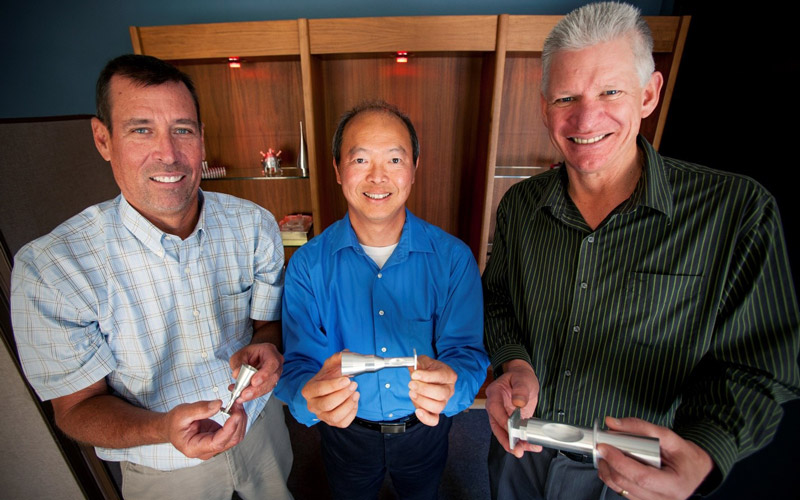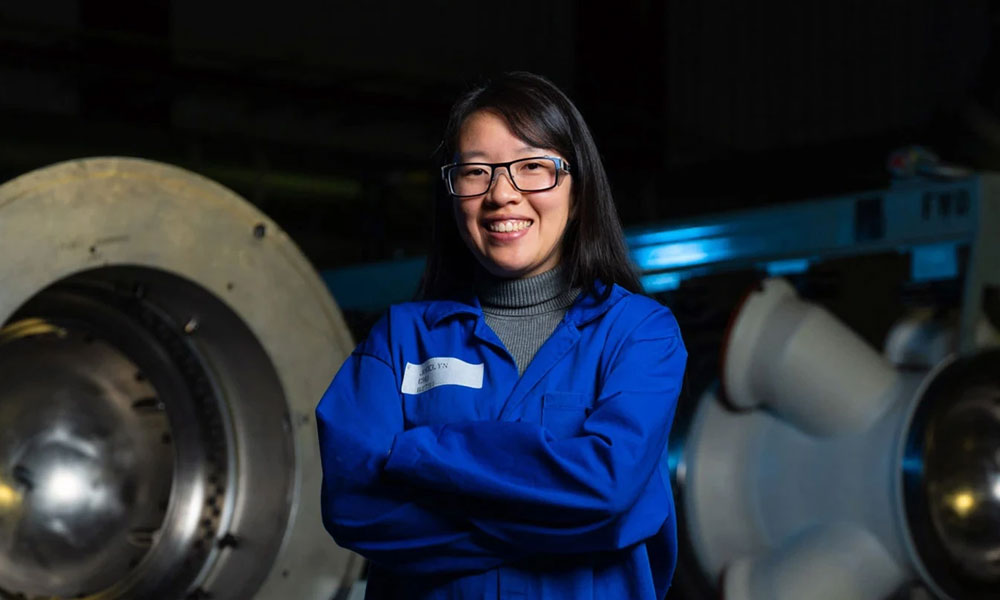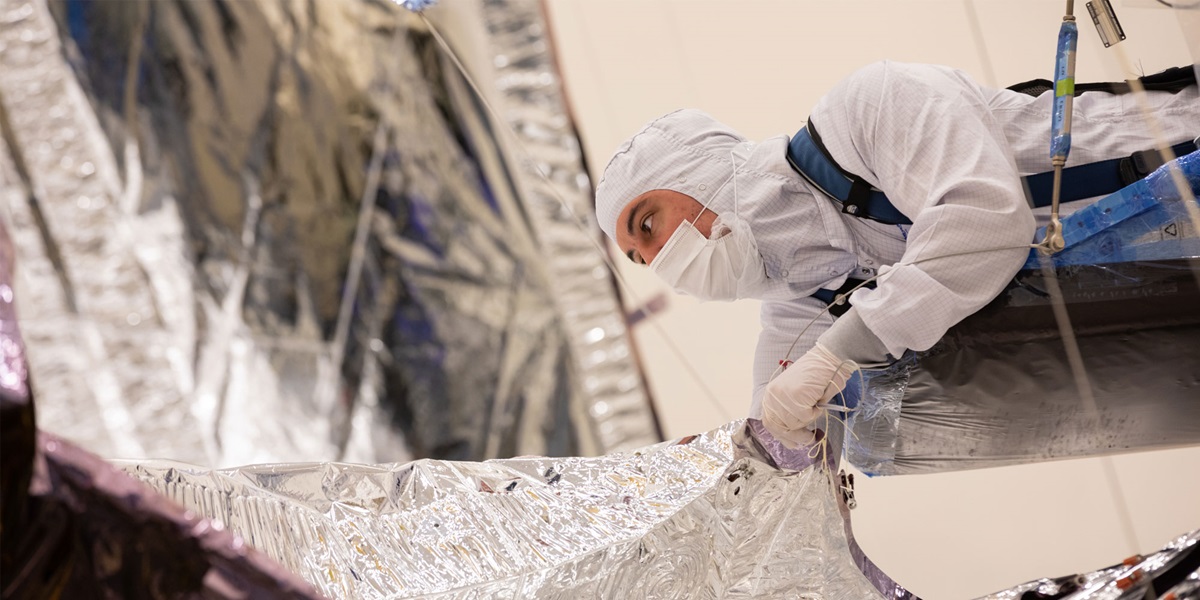Doughnuts: They’ve inspired early risers, morning meeting attendees, Homer Simpson and, now, an engineer.
Steven Kuo, Northrop Grumman electrical engineer, was driving in Gardena, California, when he passed a doughnut shop with a gigantic model of one of the tasty pastries perched atop the building. “I was thinking, ‘Maybe I can use that to perfect the polarizer design,'” said Kuo, who joined Northrop Grumman in April 1997 and was motivated to solve intractable engineering problems.
Building on a tried-and-tested model, Kuo used the doughnut concept to create a pinch polarizer, a state-of-the-art microwave device that transforms a linear radio signal into a circularly polarized signal, providing far more efficient satellite communications.
When Kuo modeled the design on a computer, it worked well. Now he just needed a manufacturing team to build the pinch polarizer. The manufacturing engineers that Kuo met with were puzzled by the concept initially, but their eyes began to widen as he explained how it worked, he recalls. “Once I saw them smile, it really made me feel great,” Kuo said.

Under the direction of supervisor Andy Roberts, Kuo, along with manufacturing engineer Jim Ingram and other teammates, came up with a cost-effective way to mass-produce the polarizer.
“Steven showed me a design that I had never seen before, but the collaboration between the electrical and manufacturing teams was key to making this thing producible,” said Ingram, who has 30 years of experience under his belt. “It’s a great story of collaboration.”
The design resulted in millions of dollars in savings. “This is an example of a quality product that delivers high performance, yet it’s affordable to the customer,” Kuo said.
Team members “were under the gun” to develop a design that worked, Kuo said, and they spent days, nights and weekends perfecting it. “We had one month to come up with the design, but we were confident,” he added. “We worked around the clock.”
And the engineers faced the added challenge of devising a way to produce thousands of the devices while retaining high quality. “The design was great, but there was room for improvement,” Ingram said.
Ingram asked Kuo to make some tweaks, and the electrical engineer gladly obliged. “Steven made himself available to the manufacturing team so this could be done the right way,” he said. “We’re still getting the same performance for an unbelievably low cost.”
To date, the pinch polarizer has been so successful that it may be replicated across the company to solve engineering problems. “Our very best electrical engineers, like Steven, get out into the manufacturing areas to discuss product feasibility before something is made,” Ingram said. “I was beating my head against the wall trying to come up with a solution — it just took a little collaboration.”
Northrop Grumman engineering and manufacturing teams work together to solve problems and create efficiencies all the time. Find jobs that suit your interests and talents with these quick links: engineering and manufacturing.

Life at Northrop Grumman: Recent Stories
Shape your career journey with diverse roles and experiences that expand your expertise, feed your curiosity, and fuel your passion.

Life at Northrop Grumman: Archived Stories
It takes every one of us to make the impossible a reality. See what life is like at Northrop Grumman.